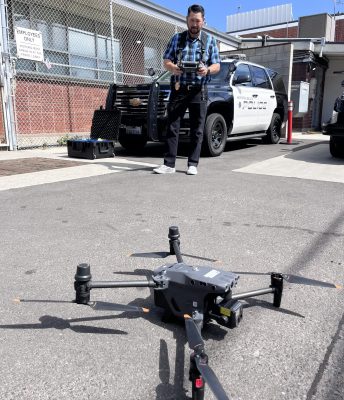
As the sun’s warmth fills the air and the allure of open roads beckons, the summer season heralds a time of adventure and exploration for many. Amidst the excitement, it’s crucial to recognize the importance of safety on the road, particularly during the summer months when travel peaks.
While summer driving promises unforgettable experiences, it also presents unique challenges, including an increased risk of accidents, especially left-turn collisions at intersections. These accidents often occur due to misjudgments of oncoming traffic speed or failure to yield the right-of-way.
By arming ourselves with knowledge and adopting safe driving practices, we can ensure that the joy of summer travel is coupled with a commitment to safety for ourselves and others on the roadways.
Preparing Your Vehicle for the Summer Drive
Before embarking on your summer road trip, it’s crucial to ensure your vehicle is in top-notch condition to handle the challenges of the season.
Begin by examining your tires, ensuring they’re properly inflated and have sufficient tread depth for optimal traction on hot roads. Check the brakes and brake fluid to guarantee responsive stopping power, particularly important during sudden summer downpours.
Inspect the coolant and radiator to prevent engine overheating in the blistering heat. Don’t underestimate the significance of air conditioning during summer drives; a properly functioning system keeps drivers alert and comfortable.
Pack emergency supplies such as a first-aid kit, flashlight, water, and non-perishable snacks to be prepared for any unexpected situations.
Planning Your Route
Embarking on a summer drive is more than just starting the engine; it’s about charting a course that ensures safety and enjoyment.
Choosing your route wisely is akin to laying the foundation for a successful trip. Opt for roads that promise smooth sailing, free from potholes or unexpected detours. Consider the flow of traffic and potential construction zones, allowing flexibility to navigate around potential delays.
Strategically plotting rest stops and refueling points not only prevents driver fatigue but also ensures your vehicle stays ready for the road ahead. Leverage technology, such as GPS navigation or smartphone apps, to stay ahead of traffic snarls and road closures, keeping your journey on track.
Crafting a thoughtful route isn’t just about reaching your destination—it’s about savoring the journey itself. Take the scenic route, explore detours, and let the road unveil its wonders as you journey forth into the summer’s embrace.
Staying Alert and Focused Behind the Wheel
Maintaining focus and alertness is paramount during summer drives to ensure safety for you and fellow travelers. Prioritize adequate rest before embarking on long journeys to mitigate the risks of driver fatigue.
Minimize distractions by stowing away mobile devices and avoiding activities that divert attention from the road. Instead, engage in conversation with passengers or listen to soothing music to maintain alertness.
Recognize the signs of fatigue, such as yawning or drifting attention, and take regular breaks to recharge. Utilize rest areas or scenic viewpoints to stretch your legs, refresh your mind, and refocus on the road ahead.
By staying vigilant and attentive, you not only enhance your safety but also contribute to safer roadways for everyone. Remember, your focus can make all the difference in ensuring a memorable and incident-free summer journey.
Defensive Driving Techniques
Driving defensively is a proactive approach that can significantly reduce the risk of accidents and ensure a safer journey for all. Below are some key defensive driving techniques to employ during your summer travels:
- Maintain Safe Following Distances: Keep a safe distance between your vehicle and the one in front of you, allowing ample time to react to sudden stops or changes in traffic flow. A general rule of thumb is to maintain a three-second gap under normal driving conditions and increase it during adverse weather or heavy traffic.
- Anticipate the Actions of Other Drivers: Stay vigilant and anticipate the behavior of other motorists on the road. Watch for signs of erratic driving, such as sudden lane changes or tailgating, and be prepared to adjust your own driving accordingly.
- Be Mindful of Blind Spots: Check your blind spots regularly, especially when changing lanes or merging onto highways. Utilize your mirrors effectively and perform shoulder checks to ensure there are no vehicles lurking in your blind spots before maneuvering.
- Use Turn Signals and Mirrors Effectively: Signal your intentions early when changing lanes or making turns to communicate your movements to other drivers. Regularly check your mirrors to maintain awareness of surrounding traffic and potential hazards.
- Remain Calm and Patient: Avoid aggressive driving behaviors such as speeding, tailgating, or road rage. Stay calm in challenging situations and refrain from engaging with aggressive drivers. Remember, arriving safely is more important than arriving quickly.
- Adapt to Changing Conditions: Adjust your driving behavior based on prevailing conditions such as weather, road surface, and visibility. Reduce speed during rain or fog to maintain control of your vehicle and increase stopping distance.
- Stay Updated on Traffic Conditions: Stay informed about traffic conditions and road closures using GPS navigation systems or traffic apps. Plan alternative routes if necessary to avoid congestion or accidents.
Coping with Weather Challenges
Driving safely in diverse weather conditions is essential for ensuring the safety of all travelers on the road. Whether facing rain, fog, or intense heat, it’s crucial to adjust your driving behavior accordingly.
Reduce speed and increase following distances during rain to prevent hydroplaning and maintain control of your vehicle. In foggy conditions, use low beams and fog lights to improve visibility and stay vigilant for sudden hazards.
Take precautions to stay cool and hydrated in extreme heat, such as keeping your vehicle well-ventilated and carrying plenty of water.
Interacting Safely with Other Road Users
Sharing the road responsibly with fellow travelers is paramount for safety. Be attentive to cyclists and pedestrians, yielding to them at crosswalks and giving them ample space when passing.
Respect the rights of motorcyclists by giving them enough room to maneuver and avoiding sudden lane changes. When driving near large vehicles, such as trucks or buses, be mindful of their blind spots and avoid lingering in these areas.
As you embark on your summer drive, remember that safety should always be your top priority. Take the time to plan your route thoughtfully, stay alert behind the wheel, and be prepared for emergencies.
And above all, drive responsibly, respecting the rights of others and obeying traffic laws. With these principles in mind, you can make the most of your summer adventures while ensuring the safety of yourself, your passengers, and those sharing the road with you. Safe travels!










Thanks for such an insightful post! Your expertise really shines through.
Bin begeistert von deiner Sichtweise!